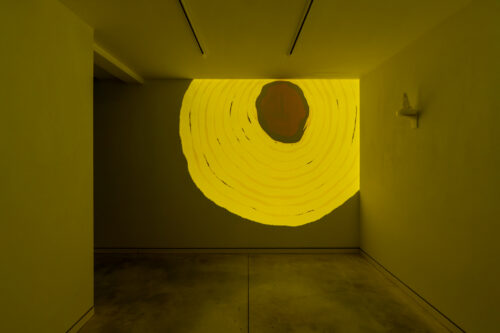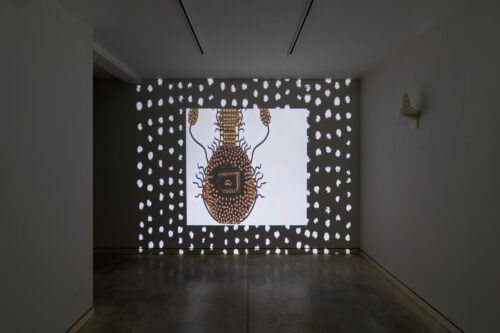Solo at Rothschild
a space for solo exhibitions, created by the Edmond de Rothschild Center especially for members of the Edmond de Rothschild Center network. Its purpose is to foster the development of new projects and facilitate the production of existing works by providing curatorial guidance and encouraging group thinking processes.
The current series of exhibitions seeks to address the concepts monologue/dialogue – on their own and the tension between them – in a way that invites a broadening of their meanings, as an observation of two types of discourse whose main purpose is communication of a message, a position, or an opinion.
Monologue/Dialogue
Four solo exhibitions at the Edmond de Rothschild Center, floor1-
May-November 2024
Participants: Olga Stadniuk, Mor Peled, Tom Maor, Ronel Pines
Curators: Nofar Cohen, Rotem Kaplan, Reut Kremer Segal, Sofia Paks
Second Exhibition on Monologue/Dialogue
Mor Peled | Spirit of the West
Curator: Rotem Kaplan
Language possesses a flexible, surprising, often uncontrolled space of interpretation. It acts as a tool that transforms abstract messages into tangible forms, much like the artistic process, where an idea is made observable and tangible, yet remains open to intervention and change. In the exhibition “Spirit of the West”, Mor presents her ongoing dialogue as a creator who shares her studio and creative work processes with artificial intelligence. Together, they weave a metaphorical fabric composed of threads from the physical and human world, as well as the virtual and artificial world. The fabric incorporates women’s customs from ancient times to the contemporary era, drawing on knowledge passed down verbally and in writing from mothers to daughters, grandmothers to granddaughters, and between neighbors and friends. This knowledge finds expression in a visual language that offers one interpretation among many within the context of time and place.
The exhibition features three figurines whose shapes derive from the ongoing dialogue between Mor and the artificial intelligence, in which they converse through female images, each drawing from her respective knowledge base. The figurines serve a dual purpose: They are both archaeological artifacts linked to ancient female imagery and icons—visual symbols related to technological realms—designed to convey concise messages without speech or text.
A video work displayed in the space of the gallery reveals the tension between the past, present, and future. Fragments of prompts appear throughout the video, tracing the dialogue that transpired, showcasing the exchange of creative ideas, sketches, and collaborative work processes. This raises questions about the relationship between humans and technology in the current era, highlighting a single point in time within the broader fabric of human and artificial life intertwined.











